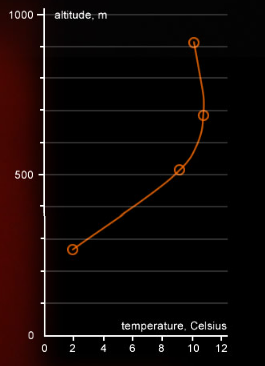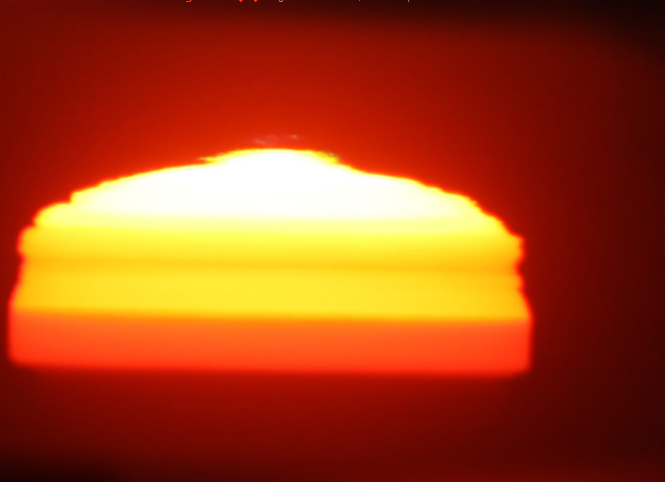Sunset Mock-Mirage, Hungary - OPOD
Sunset Mock-Mirage in Hungary - A Captivating Optical Phenomenon
Have you ever witnessed a sunset that seemed to defy the laws of nature? A spectacle where the sun's rays curved and twisted, creating multiple images and enchanting colors? Such a phenomenon is known as a sunset mock-mirage, and it was beautifully captured by Rafael Schmall in Hungary's Zselici Csillagpark.
The Dance of Light and Temperature Inversions
As the sun descends, its rays pass through a strong temperature inversion in the atmosphere. Temperature inversions occur when a layer of warm air sits above cooler air, causing light to refract in unusual ways. In this case, the sun's rays curve as they traverse between different air layers with varying temperatures.
Multiple Sun-Slice Images
The bending of light in the temperature inversion creates several ray paths that reach our eyes, resulting in the appearance of multiple sun-slice images. Some of these images are inverted and ascend, while others are upright and descend. This mesmerizing effect is reminiscent of green flashes, and indeed, one can be seen in the second row of images captured by Rafael Schmall.
Unveiling the Temperature Structure
The presence of multiple sun-slice images in the mock-mirage sunset provides valuable insights into the fine temperature structure of the atmospheric layers. By carefully studying these images, scientists can gain a deeper understanding of how temperature inversions form and behave. It is a captivating visual representation of the hidden intricacies within our atmosphere.
The Elusive Green Flash
In one of the images captured by Schmall, a green flash briefly adorns the upper limb of the sun. Unlike inferior mirage flashes, which are visible to the naked eye, these green flashes are not easily observed without aid. It is essential to exercise caution and avoid viewing them directly through binoculars or other optical devices. Even though the sun may appear dim, it still emits copious amounts of infrared radiation that can be harmful to the eyes.
Insights from Balloon Measurements
To further unravel the secrets of this atmospheric phenomenon, nearby balloon measurements were conducted. These measurements revealed a significant temperature inversion that extended up to 700 meters above the ground. This finding aligns with the conditions necessary for the formation of mock-mirages and offers valuable data for scientific analysis.
A Simplified Mirage
As the sun continues its descent, the mirage gradually simplifies, presenting a lower descending (upright) image of the sun's upper limb, accompanied by an ascending inverted image of the same. This transformation highlights the dynamic nature of atmospheric optics and the ever-changing interplay between temperature inversions and light refraction.
In conclusion, the sunset mock-mirage witnessed in Hungary's Zselici Csillagpark is a breathtaking example of the mesmerizing dance between light and temperature inversions. Through the skilled lens of Rafael Schmall's camera, we catch a glimpse of the hidden complexities within our atmosphere. By studying these images and conducting balloon measurements, scientists can deepen their understanding of temperature inversions and their impact on optical phenomena. So, keep your eyes peeled during sunsets, as you never know when nature will unveil its captivating secrets in the sky above.

Mock-Mirage Sunset, Hungary ~ An image series by Rafael Schmall from the new star sky park, Zselici Csillagpark. As the sun sinks its rays enter a strong temperature inversion. The rays curve as they are refracted between air layers at different temperatures. Several ray paths reach the eye yielding multiple sun-slice images. Some are inverted and ascend while others are upright and descend. This is the stuff of green flashes and one is visible in the 2nd row and large image below.� � Images ©Rafael Schmall, shown with permission


Nearby balloon measurements provided this profile. Normally, air nearest the ground is warmest and gets colder with height. Here there is a very strong temperature inversion up to 700m.

A mock-mirage green flash briefly adorns the sun's upper limb.
Unlike inferior mirage flashes, these are not visible to the unaided eye.
Never be tempted to view through binoculars. The sun might be visibly dim but copious amounts of infra-red are still being transmitted.

Multiple images signal fine temperature structure in atmospheric layers.

Now the mirage simplifies to a lower descending (upright) image of the sun's upper limb and above it an ascending inverted image of the same.
Note: this article has been automatically converted from the old site and may not appear as intended. You can find the original article here.
Reference Atmospheric Optics
If you use any of the definitions, information, or data presented on Atmospheric Optics, please copy the link or reference below to properly credit us as the reference source. Thank you!
-
<a href="https://atoptics.co.uk/blog/sunset-mock-mirage-hungary-opod/">Sunset Mock-Mirage, Hungary - OPOD</a>
-
"Sunset Mock-Mirage, Hungary - OPOD". Atmospheric Optics. Accessed on November 24, 2024. https://atoptics.co.uk/blog/sunset-mock-mirage-hungary-opod/.
-
"Sunset Mock-Mirage, Hungary - OPOD". Atmospheric Optics, https://atoptics.co.uk/blog/sunset-mock-mirage-hungary-opod/. Accessed 24 November, 2024
-
Sunset Mock-Mirage, Hungary - OPOD. Atmospheric Optics. Retrieved from https://atoptics.co.uk/blog/sunset-mock-mirage-hungary-opod/.